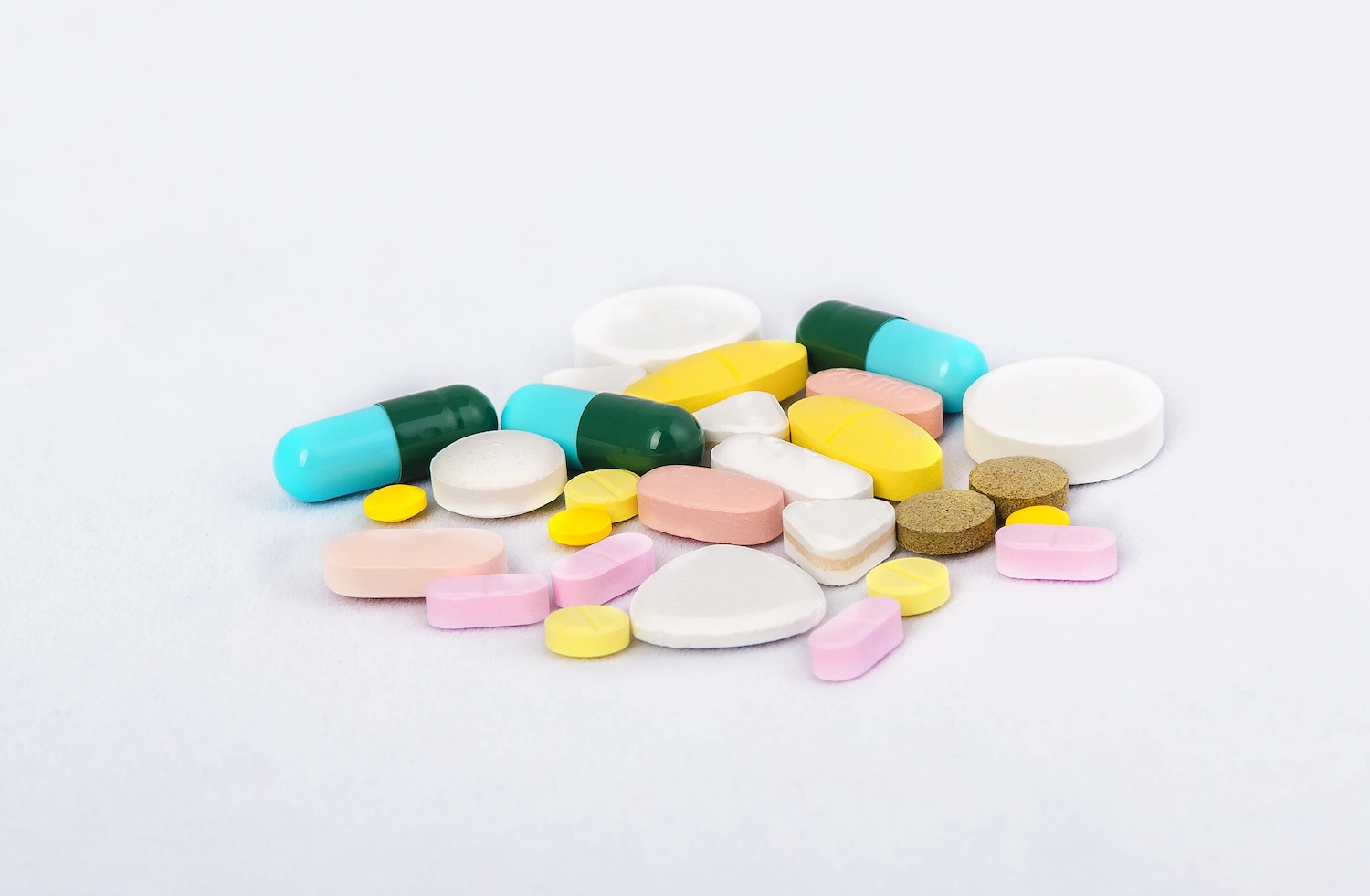
HPMC refers to a versatile cellulose ether used in a wide range of industries as a thickener, binder and film former. This high-performance additive is made by controlled chemical modification of natural cellulose.
In industrial applications, HPMC maintains stable performance due to its excellent properties (water solubility, thermal gelation and adhesion enhancement). With its cost-effectiveness and compliance, HPMC has become a must-have material in building materials, pharmaceutical formulations, personal care products and food applications.

What is HPMC?
HPMC stands for Hydroxypropyl Methylcellulose, a semi-synthetic, water-soluble polymer derived from cellulose (a natural plant fiber). It’s commonly used as a thickener, binder, film-former, and stabilizer in various products.
Because it’s non-toxic, biodegradable, and safe for multiple applications, HPMC has become a popular ingredient in industries like construction, pharmaceuticals, cosmetics, and food.
What is HPMC Made From?
HPMC is made from cellulose, which is a natural polymer found in the cell walls of plants. The process of making HPMC involves modifying cellulose to create a compound that has enhanced properties.
The production of HPMC begins with the extraction of cellulose from wood pulp or cotton. This cellulose is then treated with a series of chemicals, including propylene oxide and methyl chloride. The resulting material is hydroxypropyl methylcellulose, which is then dried and powdered for use in various applications.
If you want to know more about how is HPMC made, you can read the extensive article about the production of hpmc powder in our factory.
HPMC Specification
| Appearance: | white or off-white |
| Moisture: | ≤5 % |
| Ash: | ≤5 % |
| Methoxy content: | 19-24 % |
| Hydroxypropyl content: | 4-12 % |
| pH value: | 6-8 |
| Viscosity: | 400-75,000 mPa.s (Brookfield RV, 2%) |
Melacoll™ HPMC Grades
MelaColl™ is a leading provider of Hydroxypropyl Methylcellulose (HPMC), offering a wide range of premium-grade HPMC products and tailored solutions to suit various industrial applications. With a commitment to quality and customization, MelaColl™ ensures reliable performance for your specific requirements.
- MP400 - Superior flowability and extended open time
- MP10000 - Less retardation of cement hydration & Good workability
- MP20000 - Good workability & Good sag resistance
- MP30000 - Excellent workability & less lump formation
- MP45000 - Good workability & Extended open time
- MP50000 - Good sag resistance & Excellent workability
- MP70000 - Good sag resistance & Excellent water retention & High adhesive strength
Physical Properties of HPMC
- Thickening Agent: HPMC can increase the viscosity of liquids, making it an excellent thickening agent for various products.
- Binding Agent: It helps bind ingredients together, ensuring that products maintain their consistency and stability.
- Film-Forming: HPMC can form a thin film when applied to surfaces, which is useful in coatings and adhesives.
- Water-Soluble: One of its most significant advantages is that it dissolves in cold water, making it easy to incorporate into different formulations.
- Non-toxic and Biodegradable: HPMC is considered safe for use in food and pharmaceutical products, as it does not pose health risks when ingested.
What is HPMC Used For? – The Common Applications
Thanks to its versatility, HPMC is used in a wide range of industries. Let’s explore some of the most common applications.
HPMC in the Construction Industry
Hydroxypropyl Methylcellulose (HPMC) is a key ingredient in many construction materials. It improves performance, workability, and durability
1. Tile Adhesive
HPMC makes tile adhesives sticky and easy to apply. It helps the adhesive hold tiles firmly without slipping. It also retains water, allowing the adhesive to dry slowly and form a strong bond.
2. Cement Renders & Plasters
In cement renders and plasters, HPMC acts as a thickener and water retainer. It prevents cracks by slowing down water loss, giving the mixture more time to set properly. It also improves workability, making it easier to spread smoothly.
3. Self-Leveling Compounds
Self-leveling floors need to flow evenly and dry without cracks. HPMC helps control the thickness and drying time, ensuring a flat, smooth surface. It also reduces shrinkage and improves strength.
4. Gypsum-Based Products
HPMC is used in gypsum plasters, joint fillers, and other gypsum products. It enhances adhesion, reduces cracking, and improves workability. It also helps the mixture retain moisture for better setting.
HPMC in the Cosmetics Industry
Hydroxypropyl Methylcellulose (HPMC) is a safe and versatile ingredient used in many cosmetic and personal care products. It acts as a thickener, film-former, and stabilizer, improving texture and performance.
1. Personal care
HPMC is widely used in personal care items like shampoos, lotions, and toothpaste. It acts as a thickener, giving products a smooth, creamy texture that spreads easily. In shampoos and body washes, it helps create a rich lather, while in lotions, it locks in moisture to keep skin hydrated.
2. Makeup products
In makeup, HPMC works as a binder and film-former, helping products like foundation, mascara, and lipstick stay in place.
It gives foundations a smooth, blendable texture and prevents them from cracking. In mascara and eyeliner, it forms a flexible film that resists smudging and flaking. For lip products, it enhances texture and wear time.
HPMC also helps face masks adhere better to the skin, ensuring active ingredients work effectively. Its lightweight and non-greasy feel makes it ideal for cosmetics.
HPMC in Pharmaceuticals
Hydroxypropyl Methylcellulose (HPMC) is a key ingredient in many medicines and supplements. It is safe, non-toxic, and helps improve drug performance.
1. Tablet Coatings
HPMC is commonly used to coat tablets, giving them a smooth, easy-to-swallow finish. The coating protects the medicine from moisture and masks bitter tastes. It also controls how fast the tablet dissolves, ensuring the drug releases properly in the body.
2. Eye Drops
In eye drops, HPMC acts as a lubricant to relieve dryness and irritation. It forms a soothing gel-like layer on the eye’s surface, keeping it moist for longer. Because it is gentle and non-irritating, it’s perfect for sensitive eyes.
3. Capsules
HPMC is used to make vegetarian (non-gelatin) capsules. These capsules dissolve easily in the stomach, releasing the medicine smoothly. They are ideal for people who avoid animal-based products.
4. Supplements
It helps bind ingredients in vitamins and supplements, keeping them stable. It also improves texture and makes powders or tablets easier to digest.
HPMC in Food
HPMC is also used in the food industry as a thickening agent, emulsifier, and stabilizer. It helps improve the texture of various food products, from sauces and dressings to ice creams and baked goods.
In addition to enhancing texture, HPMC can also extend the shelf life of food products by preventing the separation of ingredients and maintaining moisture levels.
HPMC in Paints & Coatings
HPMC is commonly used in the formulation of paints, coatings, and adhesives. It acts as a thickening agent, ensuring that the paint maintains a consistent viscosity during application.
Moreover, HPMC improves the spreadability of paints and helps prevent sagging or running when applied to vertical surfaces. This property is particularly important for achieving a smooth finish.

Is Hydroxypropyl Methylcellulose Safe or Not?
Yes, HPMC is considered safe for use in food, pharmaceuticals, cosmetics, and construction materials. It is a non-toxic, plant-based (cellulose-derived) additive that has been approved by major health and regulatory agencies worldwide, including FDA (U.S. Food and Drug Administration) – Approved as a food additive and pharmaceutical ingredient and EFSA (European Food Safety Authority) – Recognized as safe for consumption.
What Are the Side Effects of HPMC?
HPMC is usually well-tolerated, but some individuals may experience mild side effects, especially if consumed in large quantities. Possible side effects include:
- Gastrointestinal Issues: Some people may experience bloating, gas, or diarrhea if they consume foods or supplements containing HPMC in excessive amounts.
- Allergic Reactions: Although rare, some individuals may have an allergic reaction to HPMC, leading to symptoms like itching, swelling, or difficulty breathing. If you suspect an allergy, it is crucial to seek medical attention.
FAQs About HPMC
1. Is HPMC Synthetic or Natural?
HPMC is semi-synthetic—it’s derived from natural cellulose but chemically modified for better performance.
2. Is HPMC FDA Approved?
Yes, HPMC is approved by the U.S. Food and Drug Administration (FDA) for use in food, pharmaceuticals, and cosmetics. It is classified as Generally Recognized As Safe (GRAS), meaning it is considered safe for consumption and use in products when used as intended.
3. Is HPMC Vegan?
Yes, since it’s plant-based, HPMC is vegan-friendly (unlike gelatin capsules).
4. Can HPMC Be Used in Gluten-Free Foods?
Yes, it’s often used as a stabilizer in gluten-free baking.
5. Does HPMC Expire?
HPMC powder has a long shelf life (usually 2+ years) if stored in a cool, dry place.
Conclusion
Hydroxypropyl Methylcellulose (HPMC) is a versatile and essential compound used across various industries. Its unique properties, including thickening, binding, and film-forming abilities, make it a valuable ingredient in construction, cosmetics, pharmaceuticals, food, and paints.
With its safety profile and extensive applications, HPMC continues to be a key component in many everyday products. Whether you're applying tile adhesive, using a moisturizer, or taking medication, HPMC plays a crucial role in enhancing the quality and effectiveness of these products.
Understanding HPMC and its applications allows consumers and professionals alike to appreciate the significance of this compound in our daily lives. If you have any further questions about HPMC or its uses, feel free to ask!


Leave a Reply